The Ultimate Guide to Camp Food That Won’t Make You Cry (or Break the Bank)
Ever stared at a sad packet of freeze-dried mush and thought, “Is this really what I’m eating for the next week?”
I feel your pain. As an avid backpacker who’s trekked through 20 countries, I’ve had my fair share of disappointing camp meals. But fear not, fellow adventurers! I’m here to spill the beans on how to elevate your camp food game without breaking the bank or your back.
Why Your Camp Food Choices Can Make or Break Your Trip
Picture this: You’re halfway up a mountain, legs burning, sweat dripping, and suddenly… your energy crashes. Why? Because that measly packet of instant noodles just didn’t cut it.
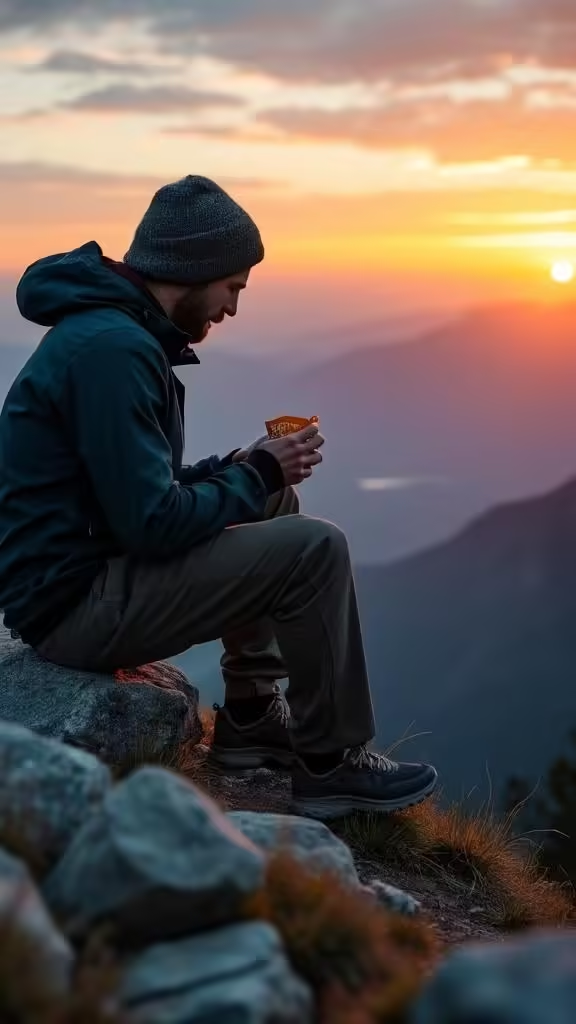
Here’s the deal:
- Active backpackers need 2,000-3,000 calories daily
- Balanced meals maintain energy levels and aid recovery
- Proper nutrition can be the difference between summit success and a miserable trek back to base camp
I learned this the hard way on my first multi-day hike in the Andes. By day three, I was running on fumes and hallucinating about cheeseburgers. Don’t be like me. Fuel your adventure properly.
The Freeze-Dried Dilemma: Friend or Foe?
Ah, freeze-dried meals. The convenience! The lightweight packaging! The… cardboard taste?
Let’s take a quick trip down memory lane:
- Early freeze-dried meals: Think astronaut food, but worse
- Modern versions: Gourmet options like Stowaway Gourmet’s Miso Salmon Okayu (fancy, right?)
But here’s the kicker: While freeze-dried meals have come a long way, they’re still not perfect. And they’ll cost you an arm and a leg if you’re not careful.
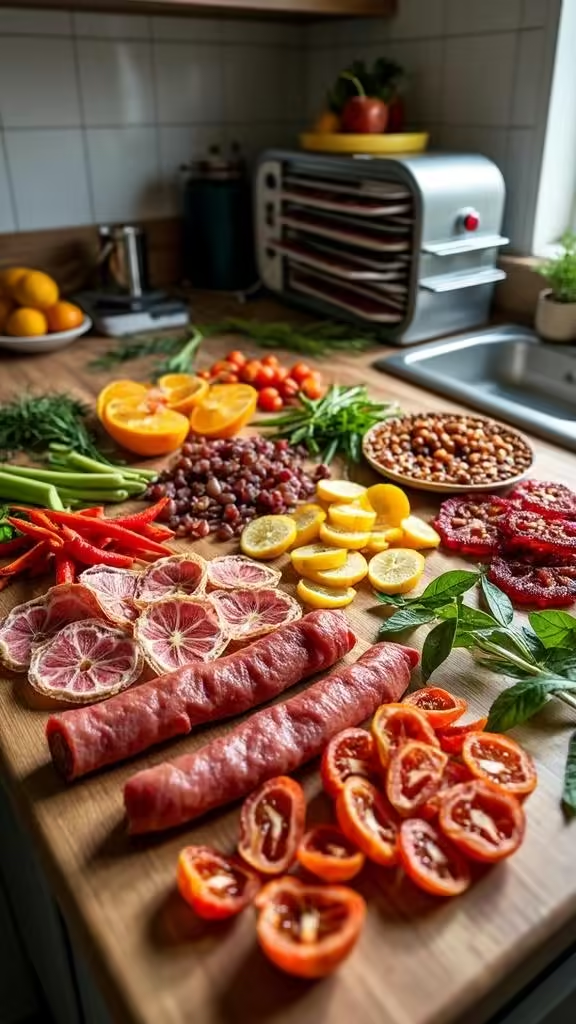
So, what’s a hungry hiker to do?
DIY Dehydrated Delights: Your Taste Buds (and Wallet) Will Thank You
Enter the magical world of home dehydration. It’s like meal prep, but for mountain people.
Here’s why you should give it a go:
- Customization: Tailor meals to your taste and dietary needs
- Cost-effective: Save big bucks compared to store-bought options
- Satisfaction guaranteed: Nothing beats homemade (even when you’re miles from home)
Pro tip: Combine dehydrated ingredients with quick-cooking bases like couscous or bulgur for a hearty, satisfying meal.
Fresh and Pre-Cooked: The Secret Weapons in Your Camp Kitchen Arsenal
Who says you can’t have fresh food on the trail? With a little creativity and planning, you can enjoy gourmet meals even in the backcountry.
Try these tricks:
- Freeze pre-cooked chicken or beef for the first day or two
- Raid the salad bar for portable veggies and toppings
- Use insulated lunch boxes and small ice packs to keep perishables fresh longer
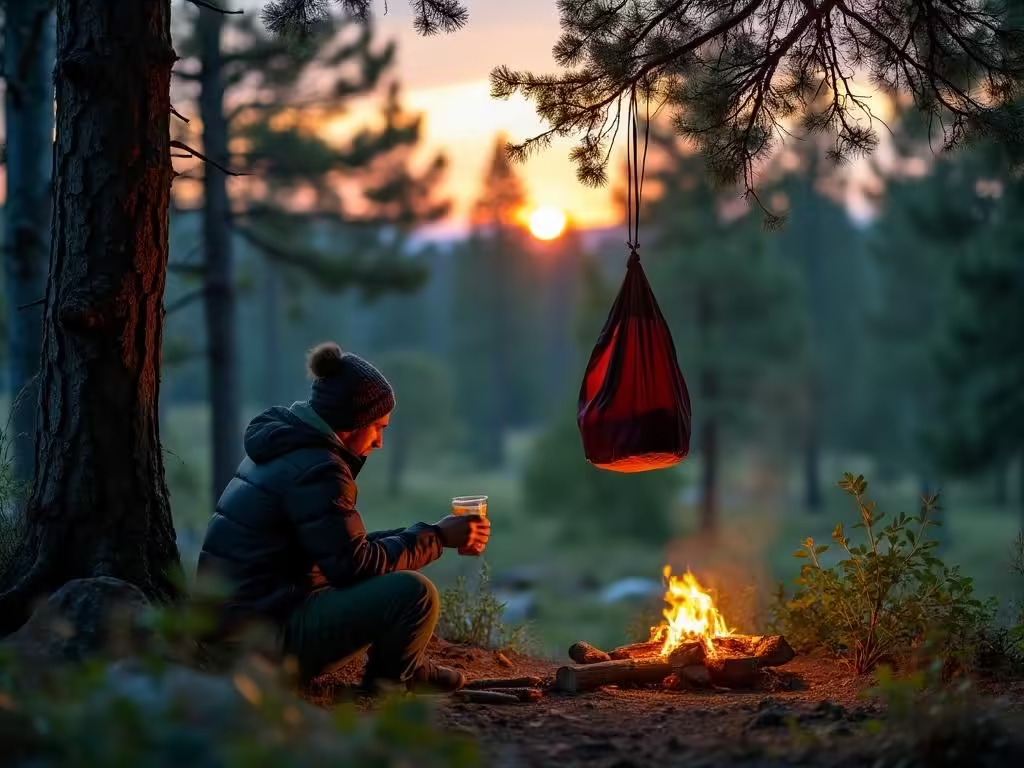
On a recent trip to the Scottish Highlands, I surprised my hiking buddies with fresh chicken fajitas on day two. Their jaws dropped faster than a clumsy climber on a slippery rock.
The Ultimate Camp Food Hack: One-Pot Wonders
Want to minimize cleanup and maximize flavor? One-pot meals are your new best friend.
Here’s why they’re a game-changer:
- Less gear to carry
- Faster cooking times
- Fewer dishes to wash (more time for stargazing!)
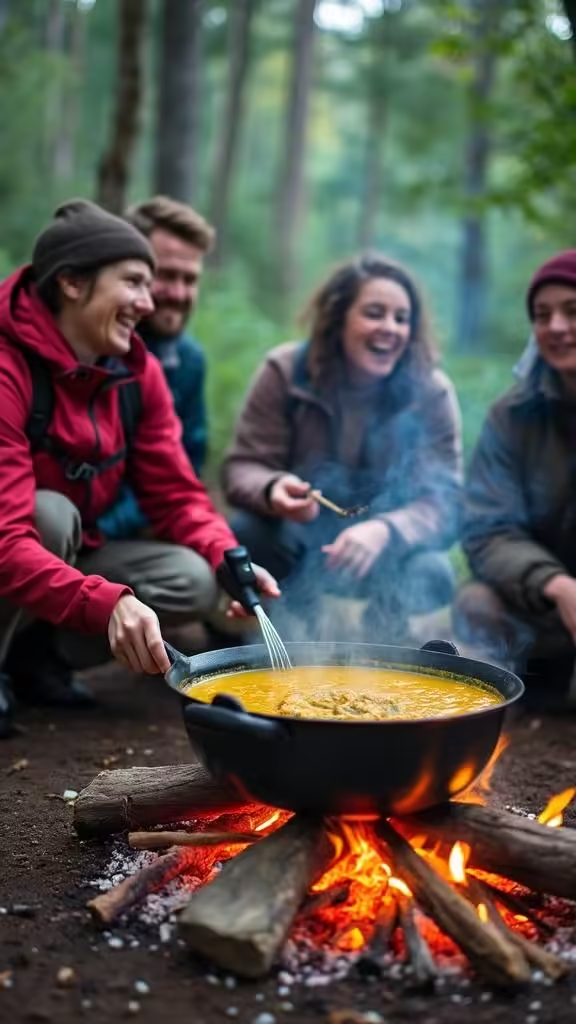
My go-to one-pot wonder? A hearty lentil and vegetable curry over instant rice. It’s warming, filling, and packs a flavor punch that’ll make your taste buds dance.
The Great Debate: Freeze-Dried vs. Homemade
Let’s break it down:
Freeze-dried meals:
- Pros: Convenient, lightweight
- Cons: Expensive, limited variety
Homemade dehydrated and fresh meals:
- Pros: Cheaper, more customizable
- Cons: Requires prep time, potentially heavier
The verdict? It’s not one-size-fits-all. Mix and match to find your perfect balance of convenience and culinary satisfaction.
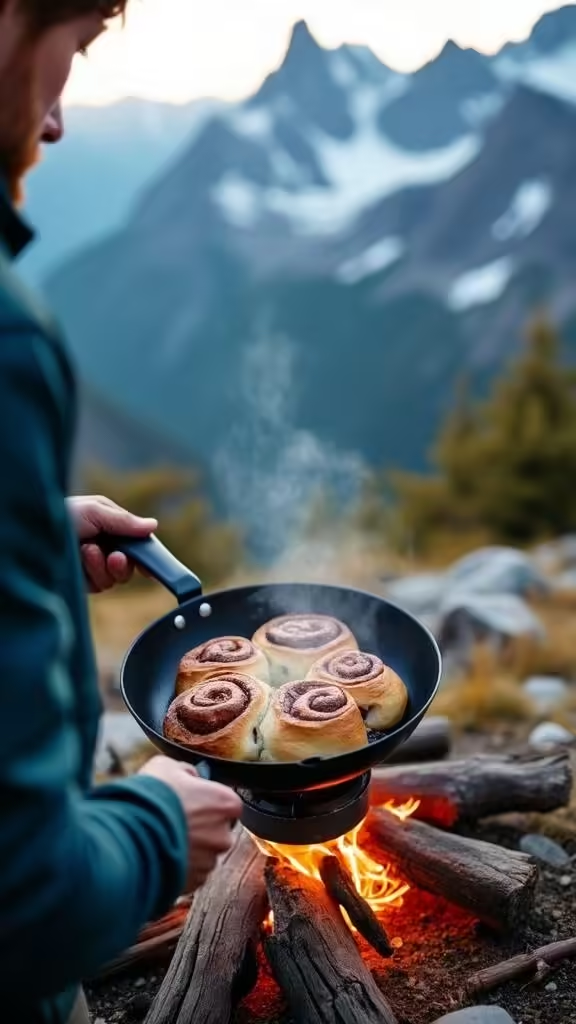
Key takeaway: Don’t be afraid to experiment. Your perfect camp meal might be a combination of store-bought convenience and homemade goodness.
The Future of Camp Food: What’s Cooking?
Exciting times are ahead for outdoor foodies:
- New dehydrating technologies promise better taste and nutrition
- Eco-friendly packaging is becoming more prevalent
- Plant-based options are expanding for vegan adventurers
Keep an eye out for these innovations on your next gear shopping spree.
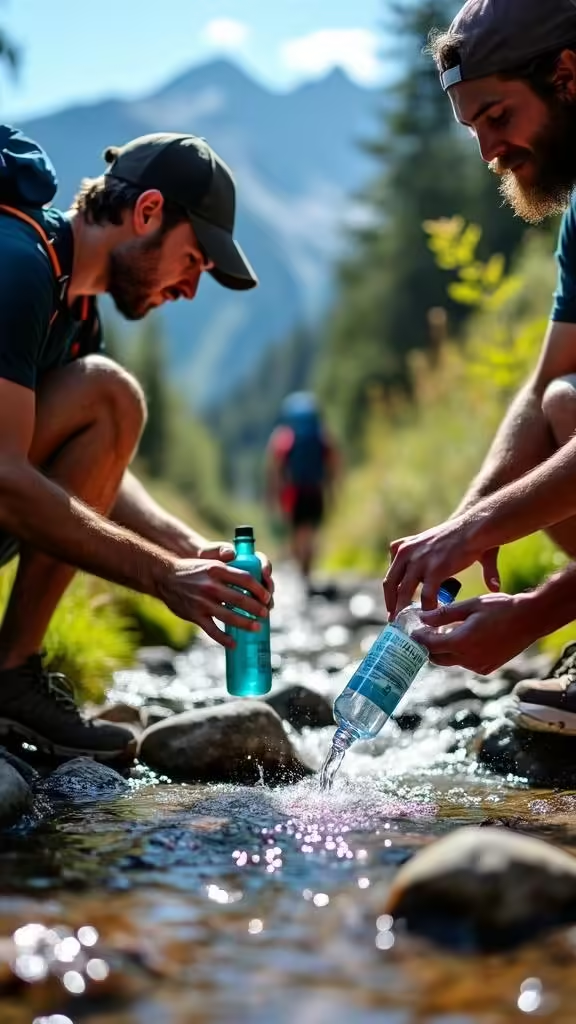
As we wrap up this first leg of our camp food journey, remember: The best meals are the ones that fuel your adventures and put a smile on your face. Whether that’s a gourmet freeze-dried risotto or a simple pot of mac and cheese with dehydrated veggies, the choice is yours.
Meal Planning: The Secret Sauce to Camp Food Success
Ever wonder why some hikers seem to have it all together while you’re scrounging for scraps? Two words: meal planning.
Here’s why it’s a game-changer:
- Prevents “hanger” meltdowns on the trail
- Ensures balanced nutrition throughout your trip
- Saves money by avoiding last-minute gear store splurges
Pro tip: Always pack an extra day’s worth of food. You never know when a surprise storm might extend your trip.
The Art of Backcountry Cooking: From Novice to Trail Chef
Think you need a culinary degree to whip up tasty camp meals? Think again!
Here are some pro tips to elevate your outdoor cooking game:
- Invest in a lightweight, reliable stove (I swear by my MSR PocketRocket)
- Master the one-pot meal technique
- Use spices and seasonings to add flavor without weight
- Learn to bake on the trail (yes, it’s possible!)
Snack Attack: Fuel Your Adventure Between Meals
Never underestimate the power of a well-timed snack. Here are some of my go-to options:
- Trail mix (customize your own for the perfect sweet-salty balance)
- Energy bars (look for ones with a good protein-to-carb ratio)
- Dried fruit and nuts (nature’s original energy food)
- Jerky (beef, turkey, or plant-based for a protein punch)
Remember: Snacks should be easily accessible. Stash them in hip belt pockets or outer backpack compartments for quick energy boosts.
Hydration Station: Don’t Forget to Drink!
Even the best camp food won’t do you any good if you’re dehydrated. Here’s how to stay on top of your fluid game:
- Aim for at least 2-3 liters of water per day (more in hot weather)
- Use electrolyte tablets or powders to replenish minerals
- Consider a hydration bladder for easy sipping on the go
Fun fact: Mild dehydration can mimic hunger. If you’re feeling peckish, try drinking some water first.
Leave No Trace: Sustainable Camping Practices for Food
As outdoor enthusiasts, it’s our responsibility to minimize our impact. Here’s how to keep your camp kitchen eco-friendly:
- Use reusable containers and utensils
- Pack out all trash (yes, even those tiny spice packets)
- Learn proper food storage techniques to protect wildlife
- Consider biodegradable soap for cleaning
Remember: A clean campsite is a happy campsite (and keeps the bears away).
The Camp Food Revolution: Embracing New Trends
The outdoor industry is constantly evolving, and camp food is no exception. Here are some exciting trends to watch:
- Plant-based freeze-dried meals for vegan adventurers
- Compostable packaging to reduce waste
- Locally sourced ingredients in commercial camp meals
- High-tech portable cooking gadgets (solar ovens, anyone?)
As we look to the future, one thing’s clear: Camp food is only getting better. Gone are the days of bland, uninspiring meals in the backcountry.
Conclusion: Your Trail to Culinary Adventure Awaits
From dehydrated delights to one-pot wonders, we’ve covered the gamut of camp food options. Remember, the best camp meals are the ones that fuel your adventures and bring a smile to your face.

So, what’s next on your outdoor menu? Will you try your hand at DIY dehydrated meals or splurge on that gourmet freeze-dried risotto? Perhaps you’ll become the master of backcountry baking or perfect the art of the trail-side smoothie.
Whatever you choose, embrace the challenge and have fun with it. After all, food tastes better with a side of adventure.

Remember, the journey to becoming a camp food connoisseur is just beginning. Keep experimenting, stay curious, and never underestimate the power of a well-planned meal to transform your outdoor experience. Here’s to many more delicious adventures in the great outdoors!




Leave a Reply